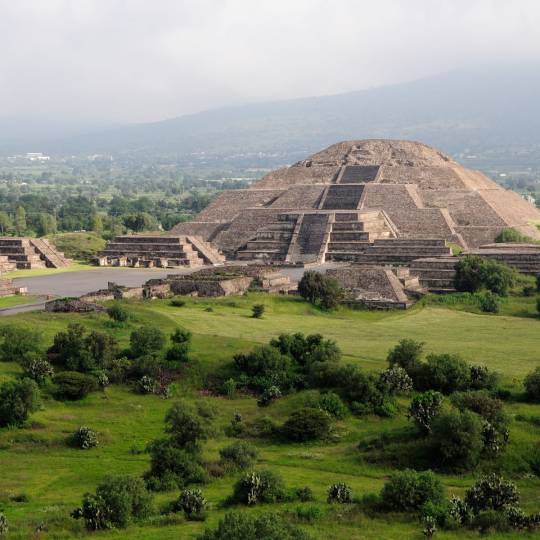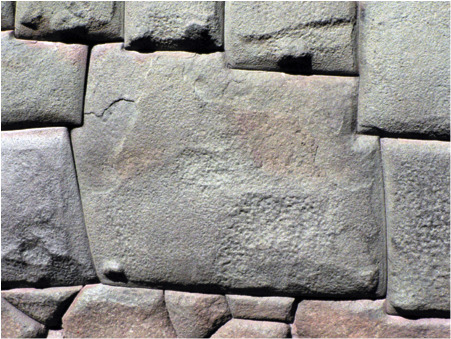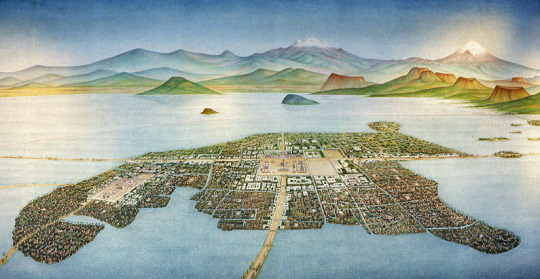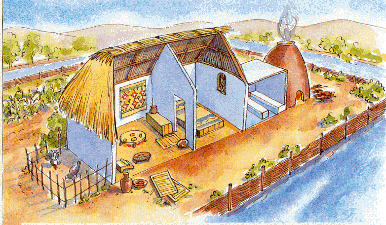#chinamapas
Explore tagged Tumblr posts
Text
Pre-Colombian Architecture
The Americas was once a rich and diverse continent. Before the Europeans arrived, Mesoamerica and South America was once home to ancient civilizations such as the Aztecs and Incas. Being two of the most complex and sophisticated civilizations to exist, they expressed their cosmology and astronomical beliefs in the architecture and urban plans of their cities. Despite their Neolithic technology, these civilizations managed to flourish greatly without fail. After the arrival of the Spaniards in 1519 C.E, both Mesoamerica and South America were continuously exploited to fit the standards of European religion, culture, and architecture. This blog post will focus primarily on the Pre-Colombian architecture and practice from 1800 B.C.E to 1519 C.E, where Ancient American races had established their prominent civilizations.

Map of Ancient Mesoamerican Civilizations. (Image sourced from lesannberry.com)
The first successful Mesoamerican civilization is Teotihuacan. Located in Mexico, very little is known about its origins and previous inhabitants. However, it is estimated that Teotihuacan was created before 250 C.E and was found abandoned by the early Aztec race.

Teotihuacan facing North, Temple of the Moon. (Image sourced from history.com)
Architecturally speaking, Teotihuacan is primarily monolithic, organized in a North to South fashion, and pays tribute to the “constellations and planetary events” during its time. The architects expressed this astronomical intelligence by placing large monumental landmarks (the Temple of the Sun and the Temple of the Moon) in the direction of sunrise and sunset.

Teotihuacan facing East, Temple of the Sun. (Image sourced from smarthistory.org)
These landmarks follow a single linear main street called “The Street of the Dead”, where it is intersected by the San Juan River. This street and river become the main axes of the city, where surrounding dwellings and buildings start to abide by. As Dr Maya Jimenez (the author of the “Teotihuacan” article I provided), states, Teotihuacan is “the first American city on a grid plan” which helped establish a order for the “religious, domestic, and commercial complexes” of the city and its population. It would also come to serve as the inspiration of Aztec architecture later on in the Post Classic Period (900 C.E - 1529 C.E).

Zoomed in plan of the Street of the Dead. (Image sourced from Elms Teotihuacan Lecture Slides).
The next successful Mesoamerican civilization is Cuzco. This is an Incan Civilization that was established roughly in 1200 C.E. in the Andes Mountains of Peru. Cuzco is the capital of the Incan Empire that shelters only residents of noble status.

Sacsayhuaman, Cuzco, Peru. (Image sourced from ancient.eu)
Unlike Teotihuacan, the urban planning in Cuzco did not follow a perfect grid. However, there was some organization to its urban layout. As Dr. Sarahh Scher (the author of the “City of Cuzco” article I provided) claims, “The city was divided into two sections, hanan (upper or high) and hurin (lower)”.

Hanan (Red), Hurin (Yellow). (Image sourced from americanindian.si.edu)
This is representative of the social organization in Incan society. Hanan, is dedicated to the higher ups of the noble class, whereas hurin is dedicated to lower moieties. These two halves are connected by a single main plaza called “Hawkaypata”. This plaza serves as the central focal point to Cuzco, and is predominately used for rituals and ceremonies. Cuzco is also divided into quarters which symbolizes the four divisions of the Incan empire.

Hawkaypata, the main plaza. (Image sourced from americanindian.si.edu)
Cuzco is primarily monolithic in materiality, but the craftsmanship of its masonry pays close attention to detail. The stones that compose the walls of buildings and its plaza barriers are chiseled to fit snugly next to each other. Dr. Sarahh Scher states that symbolically, “The masonry of Cuzco displays an understanding of stones as being like people, in that many different ones may fit together if they are properly organized”. The famous Twelve-Sided stone in the walls of Hatun Rumiyoq Street displays such craftsmanship. Another important factor regarding these stones is that they are fitted with a slight amount of space to allow for small amounts of movement. This an effective strategy in protecting the walls from earthquakes.

Twelve sided stone, Cuzco. (Image sourced from smarthistory.org)
The last and final successful Mesoamerican civilization is Tenochtitlan. Tenochtitlan is an Aztec civilization that was built in 1325 C.E and lasted until 1521 C.E. This Mesoamerican city had a large population, and was located in the middle of Lake Texcoco.

Tenochtitlan. (Image sourced from mexicolore.co.uk)
Being centered in the lake, the Aztecs had to create a city that compromised for the future aquatic challenges. To conquer these challenges, the Aztecs had created bridges for travel, floating agricultural islands called chinampas, and large monolithic temples for their culture and traditions. Much like Teotihuacan, Tenochtitlan’s city plan was a grid based on a symmetrical layout. This layout has four sections or “camps”. Each camp was divided into even smaller districts, with each district being crossed by streets.

Major “camps” that compose Tenochtitlan. (Image sourced from twitter.com)
The Aztecs also took advantage of Lake Texcoco by developing canals for easy transportation and travel. At the center of the city was the sacred precinct, where public buildings, temples, and schools were located. The temples and shrines were large in scale, with the Temple Mayor being the largest. According to an online article, regular residential houses were “made of wood and loam, and roofs were made of reed; pyramids, temples, and palaces were generally made of stone.”

Typical Aztec housing in Tenochtitlan. (Image sourced from pinterest.com)
On the border and outer perimeter the city are the famed chinampas - which were plant beds set upon the lake’s shallow bottom. These chinampas took advantage of Tenochtitlan’s surrounding environment, and created an efficient agricultural system for the city.

Cross section of chinamapas. (Image sourced from ancient-origins.net)
Bibliography:
https://smarthistory.org/teotihuacan-2/
https://smarthistory.org/city-of-cusco/
https://americanindian.si.edu/inkaroad/inkauniverse/cusco/cusco-experience.html
https://courses.lumenlearning.com/boundless-arthistory/chapter/the-aztecs/#:~:text=The%20Architecture%20of%20the%20City,city%20sections%2C%20known%20as%20campans.
https://www.history.com/topics/ancient-americas/teotihuacan
https://lesannberry.com/2012/02/09/the-wonders-of-ancient-mesoamerica/
https://www.ancient.eu/Sacsayhuaman/
https://www.mexicolore.co.uk/aztecs/aztefacts/tenochtitlan-centre-of-the-aztec-world
https://twitter.com/Cuauhtemoc_1521/status/1212907384512761856
https://www.pinterest.ca/pin/420312577714209389/
https://www.ancient-origins.net/ancient-places-americas/chinampas-floating-gardens-mexico-001537
2 notes
·
View notes
Photo

#laparcela #arteespacio #arteespaciomultidisciplinario #cdmx #sanpedrotlahuac #cienega #chinamapas
0 notes
Photo

Ciclo Maiz #laparcela #arteespacio #espaciomultidisciplinario #cdmx #chinamapas #cienega #sanpedrotlahuac #vidasustentable
#arteespacio#laparcela#cdmx#cienega#sanpedrotlahuac#chinamapas#espaciomultidisciplinario#vidasustentable
0 notes